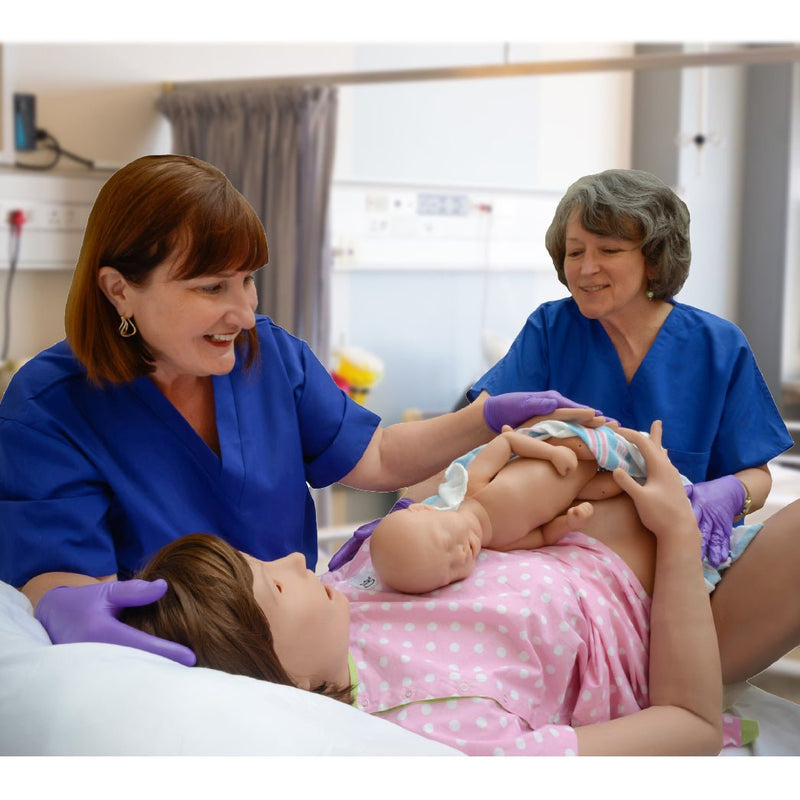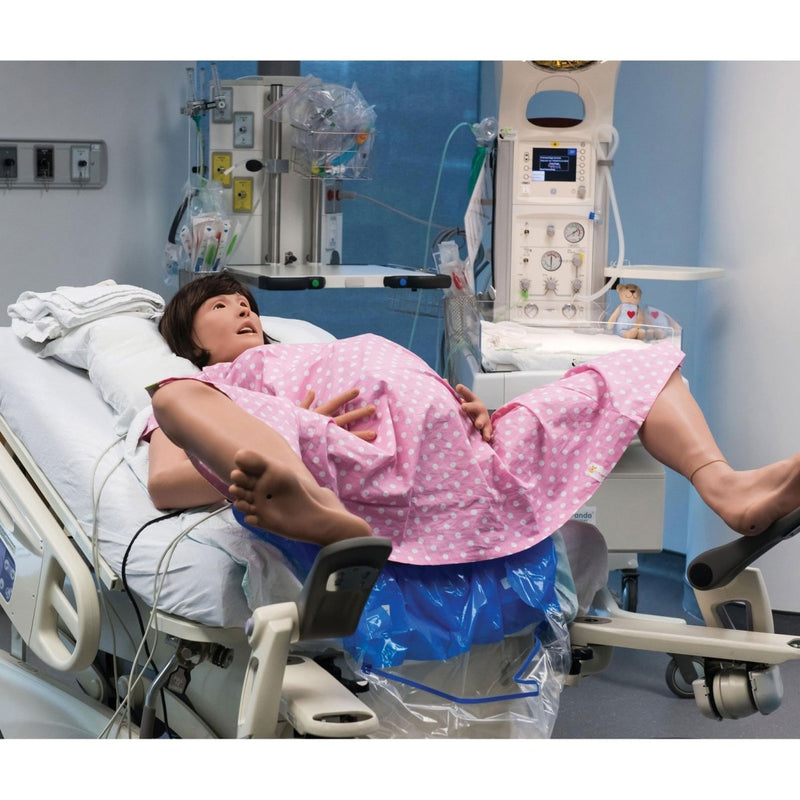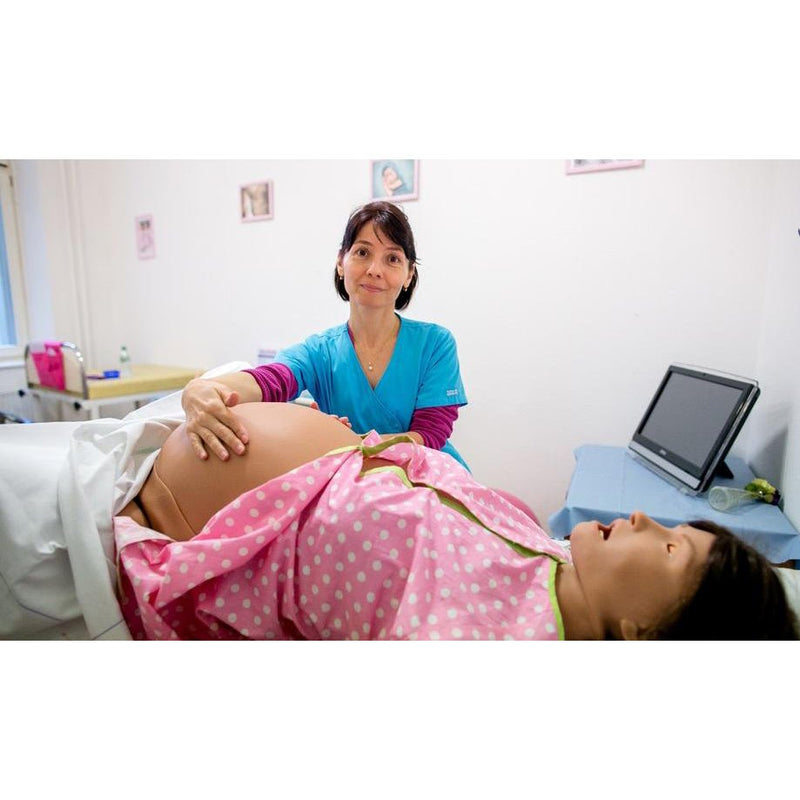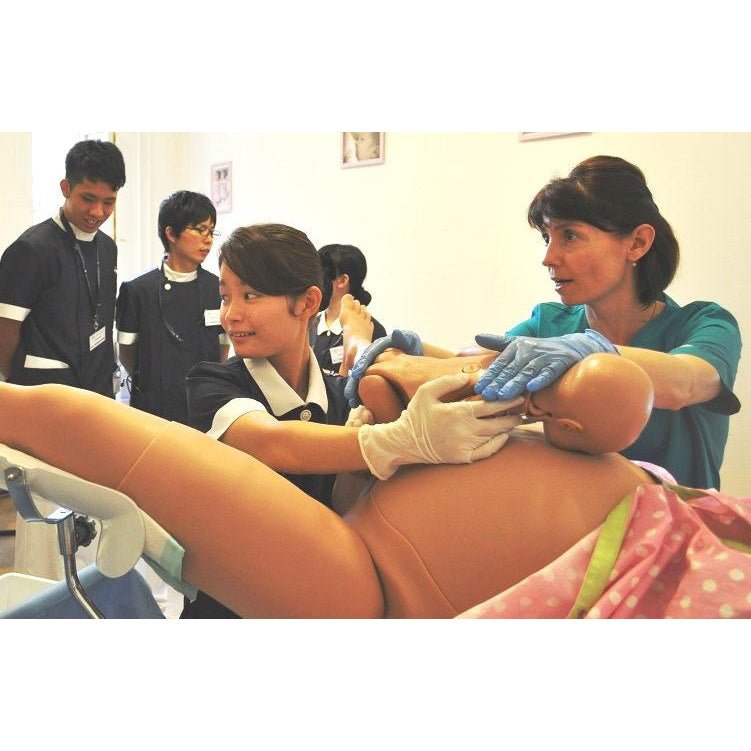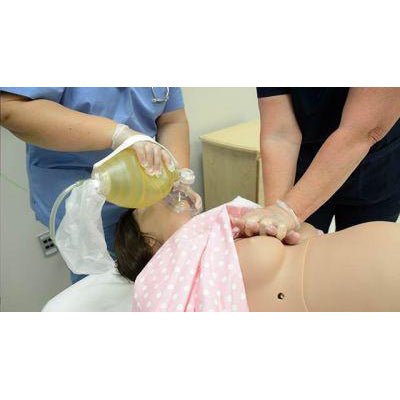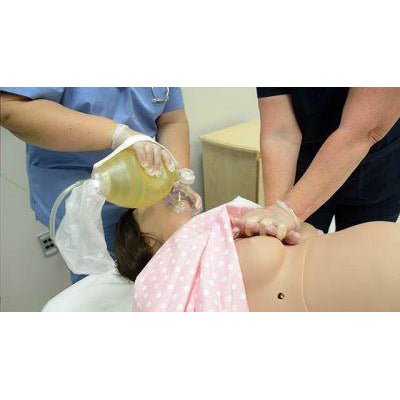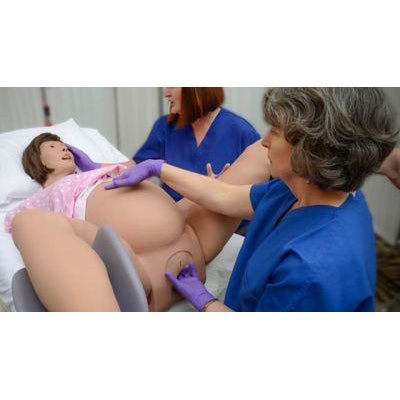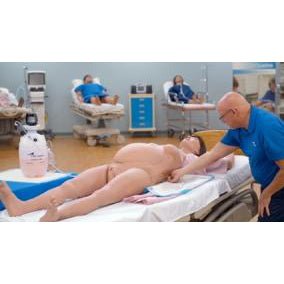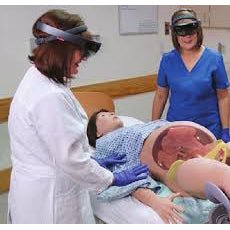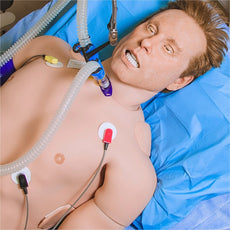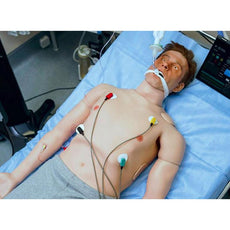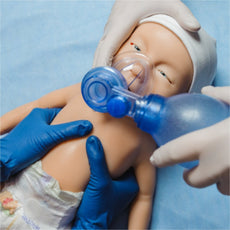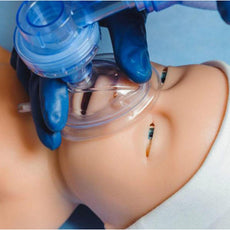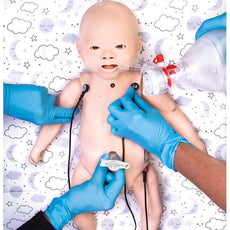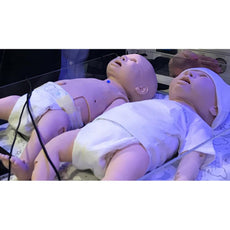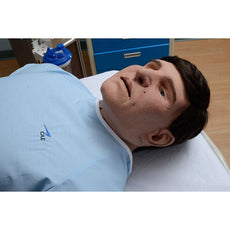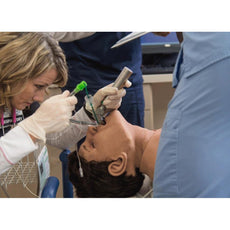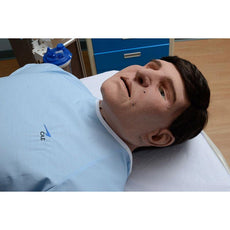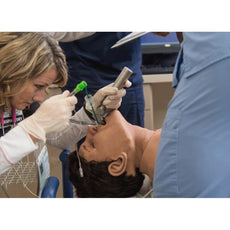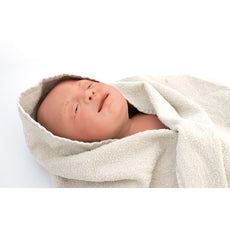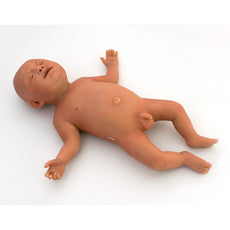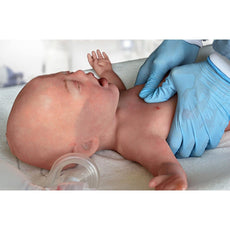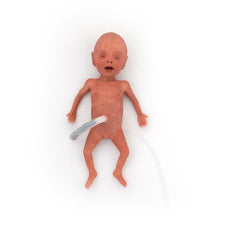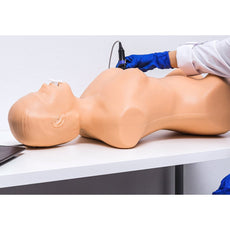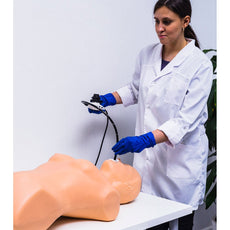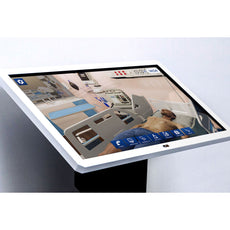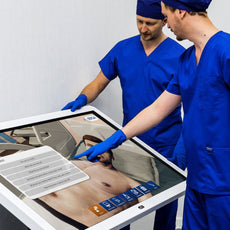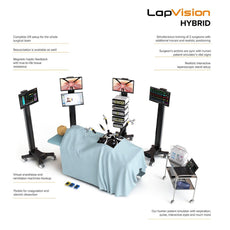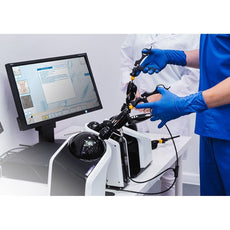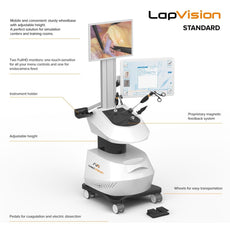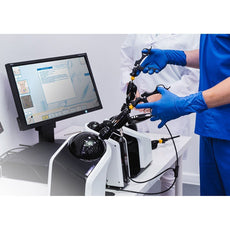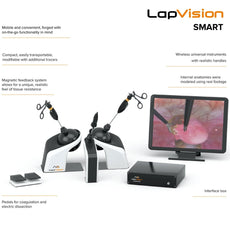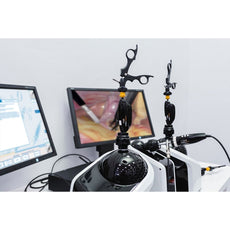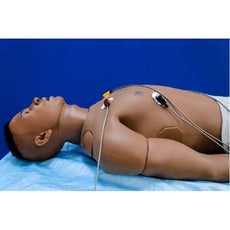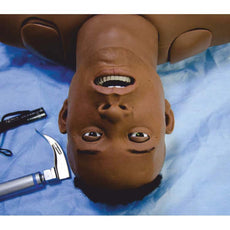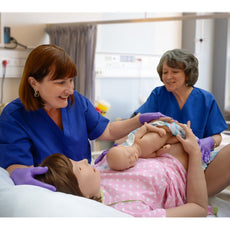Your shopping cart is empty.
Lucina Childbirth Simulator
Item # FLEX-MFS-MAESTRORequest a quote for pricing
Need an estimate?
Click Add To Quote

Validated High-Fidelity Maternal/Fetal Training. A better childbirth simulator that's beyond exceptional!
CAE Lucina is the only wireless childbirth simulator with validated, integrated maternal-fetal physiology and interchangeable static cervices to train on all the stages of delivery and the rare emergency scenario. Lucina brings an impressive blend of features to the market including a more realistic and controllable birthing process, better articulation for labor and delivery maneuvers, and predicted APGAR scores based on the integrated maternal-fetal physiology.
"Contact us for sales market specifics"
-
by
A trusted GT partner -
Gov't pricing
Available upon request
CAE Lucina Childbirth Simulator
CAE Lucina is the only wireless childbirth simulator with validated, integrated maternal-fetal physiology and interchangeable static cervices to train on all the stages of delivery and the rare emergency scenario.
CAE Lucina
Validated High-Fidelity
Maternal/Fetal Training
A better childbirth simulator that's beyond exceptional
Lucina brings an impressive blend of features to the market including a more realistic and controllable birthing process, better articulation for labor and delivery maneuvers, and predicted APGAR scores based on the integrated maternal-fetal physiology. From normal delivery and breech birth to shoulder dystocia and eclampsia, Lucina does it all. With 10 pre-configured Simulated Clinical Experiences (SCEs), Lucina allows instructors to increase throughput and manage multiple demands effortlessly.
Powered by Maestro
CAE Maestro is a user-friendly software interface that can be operated on the fly or with pre-programmed Simulated Clinical Experiences (SCEs). Maestro is intuitive, tablet-based, and allows facilitators to maneuver vital signs and patient states within seconds. Maestro also is designed for easy creation of user-developed Simulated Clinical Experiences and scenarios.
Maternal Features
-
Obstetrical
- Integrated maternal-fetal physiological modeling
- Realistic birth canal and vulva
- Perineum support with accurate fetal descent and rotation
- Multiple birthing positions: lithotomy, sitting and all fours
- Rectal suppository administration
-
Prepartum
- Vaginal examinations for evaluation of the cervix, fetal station, and position
- Static cervices represent various stages of dilation from closed to 5cm, and effacement from 0 to 90%
- Leopold’s Maneuvers
- Epidural port with infusion and aspiration
-
Fetus
- Fetal heart sounds–5-locations based on fetal presentation
- Articulated fetal body neck (with lateral neck movement), shoulders, elbows, hips, and knees
- Clinically accurate fetal size with tactile realism–50th percentile on the WHO growth chart
- Fetal neck traction sensing
- Palpable fontanel and sagittal suture
- Fetal airway suctioning
- Programmable audible cry upon delivery
- Predicted 1-minute and 5-minute APGAR scores based on fetal blood gas values
- Umbilical cord that can be cut and clamped
-
Intrapartum
- Realistic palpable uterine contractions
- Controllable rate and duration of contractions
- Trendelenburg position with detection
- Left lateral tilt with detection
- Vertex and breech delivery
- McRoberts Maneuver with observable pelvic tilt
- Suprapubic pressure support and detection with palpable symphysis pubis
- Supports delivery of posterior arm during shoulder dystocia
- Zavanelli maneuver with detection
- C-section team training support
- Rotation of anterior and posterior shoulder is detected in resolving shoulder dystocia (Rubin II and Woods’ Screw Maneuvers)
- Forceps application
- Vacuum extraction
- Intact/fragmented placenta with realistic color, texture and flexibility
-
Postpartum
- Postpartum hemorrhaging, including Class III hemorrhage
- Contracted and boggy uterus
- Bimanual compression and uterine massage with detection and automatic response
- Uterine blood released upon massage
- Inverted postpartum uterus
- Uterine reversion (optional uterine inversion module)
- Intrauterine balloon insertion
Key Features
-
Airway and Breathing
- Realistic upper airway
- Positive pressure ventilation
- Bag mask ventilation
- Advanced lungs with mechanical ventilation support, including patient-triggered modes
- Airway management and ventilation
- Supports endotracheal tubes, nasal-pharyngeal and oropharyngeal airways
- Spontaneous breathing with chest excursion
- Lung auscultation: anterior and posterior
- Spontaneous chest excursion
-
Fluids
- Postpartum bleeding tank (1.8 L)
- Bilateral IV arms
- Urinary catheterization
- Epidural infusion
-
Speech
- 2-way voice communication
- Prerecorded speech
- User-recorded speech
-
Cardiovascular
- Correct hand placement detection
- Advanced CPR analysis (compression depth and rate, chest recoil, compression fraction, ventilation volume and rate)
- CPR metrics compliant with 2015 AHA guidelines
- Pacing, cardioversion and defibrillation
- NIBP by auscultation and palpation
- Heart sounds
-
Circulatory System
- ECG monitoring posts for interface with real ECG monitor
- 12-lead dynamic ECG display
- Dynamic bilateral pulses: carotid, radial, brachial, and dorsalis pedis;
- Variable pulse strength
-
Nervous System
- Seizure is simulated with rhythmic movement of arms and rapid blinking
- SymEyes display patient symptoms and conditions, including jaundice, hemorrhage, keyhole pupil, cataracts and bloodshot or droopy eyes
- Blinking, panning and reactive eyes with multiple settings
- Normal Delivery
- Instrumental Vaginal Delivery
- Fetal Tachycardia (due to maternal pyrexia)
- Breech Delivery
- Fetal Central Nervous System Depression(due to narcotics administered to mother)
- Shoulder Dystocia
- Major Postpartum Hemorrhage (due to uterine atony)
- Maternal Cardio-Respiratory Arrest
- Eclampsia
- Umbilical Cord Prolapse
- Chronic Heart Failure Exacerbation
- Acute Respiratory Distress Syndrome
- Sepsis with Hypotension
- Brain Attack w/ Thrombolytic Therapy
- Motor Vehicle Collision with Hypovolemic Shock
Download:


GTSimulators by Global Technologies
CAE Healthcare Authorized Distributor.
Watch videos
CAE Lucina Clinical Features
CAE Lucina Postpartum Hemorrhage Setup
CAE LucinaAR Overview
CAE LucinaAR Preview
CAE Lucina Setup for Non-gravid Patient
CAE Lucina Setup for All-fours Birthing Position
CAE Lucina Normal Delivery Setup
CAE Lucina Internal Blood Tank for Postpartum Hemorrhage
CAE Lucina External Blood Tank for Postpartum Hemorrhage
About Our Simulation Curriculum
All of CAE Healthcare's simulation curriculum and patient cases are developed in collaboration with leading educational institutions and clinical experts. Simulated Clinical Experiences (SCEs) and patient cases are reviewed by healthcare educators to ensure they convey best practices and standards of care. We frequently update our curriculum based on the latest society guidelines and in collaboration with subject matter experts and offer the widest breadth of scenarios and cases, developed over 15 years in simulation, so learners can gain exposure to more patients than they would over years in practice.
Simulated Clinical Experiences include a scenario synopsis, learning objectives, learner performance measures, facilitator's notes, debriefing points, teaching questions and evidence-based references. We provide simple cases for beginners as well as a full range of complex scenarios and procedures to help practicing clinicians improve preparation and readiness. We incorporate rich patient content, from lab reports and x-rays to patient histories, based on real patient data, and our simulators can present multiple pathologies and complications to allow practice of emergency management response.
- Manikin
- Size: 69” H x 22” W x 15” D (175cm x 56cm x 38cm)
- Weight: 111lbs (50 kg)
- Fetus
- Size: 19” H x 6” W x 4.5” D (48cm x 15cm x 11.5cm)
- Weight: 5.5 lbs (2.5 kg)
-
Electrical
- Input: 100-240V, 50/60Hz, 2.3A
- Internal batteries: 14.4V, Lithium ion battery




